History of the Keeper of the Plains
In the traditional Comanche manner, Francis Blackbear Bosin was born June 5, 1921 in a tipi near Cement, Oklahoma. He grew up very poor and in an isolated area. As the oldest male, he was sent to live with his maternal grandparents as soon as he was able to walk and lived with them for more than three years. At age six, he entered St. Patrick’s Mission school. His parents had attended the same school in their youth and raised their son to speak English as they did not know each other’s native tongue. It helped young Bosin when he attended that same Catholic school since only English was allowed. He grew up with little education about his heritage and learned to walk in the white world.
During the 1940s, many Indians in Oklahoma were encouraged to move to Wichita and build planes for the war effort. They built homes, raised families, and became part of the community. One young artist and draftsman, Blackbear Bosin, who made Wichita his home was a famous Kiowa Comanche artist. He was part of the group that came together in 1969 to form the Mid-America All-Indian Center (now Museum).
In 1968, Blackbear was asked by Elmer Hall from Kansas Gas and Electric Company to design a statue as a beautification project at the confluence of the Big and Little Arkansas rivers on land owned by KG&E. The company had built an unattractive addition and wanted to beautify the area while focusing on our American Indian heritage in Kansas. However, KG&E ran out of funds and the Keeper of the Plains was not completed until May 18, 1974. It was a long process of the community coming together to find the funding to construct the sculpture. In 1972 the Wichita American Revolution Bicentennial Commission of Wichita Festivals adopted the Keeper of the Plains sculpture as the bicentennial symbol of the Wichita community. The Wichita City Commission approved $10,000 in funding and on December 12, 1973, the State Bicentennial Commission gave a matching grant. The remaining $8,500 was raised through the sale of 10,000 Commemorative Bicentennial medals by the Quivira Council of Boy Scouts of America. Without those fundraising efforts, and Tom Washburn of Architectural Metal Products’ generosity honoring the original bid made six years before construction, the Keeper wouldn’t exist today.
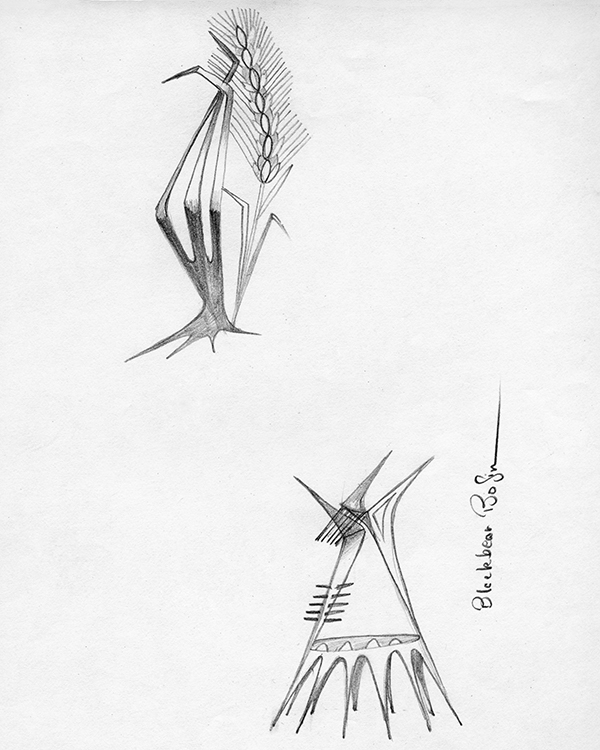
Preliminary sketch for Keeper of the Plains
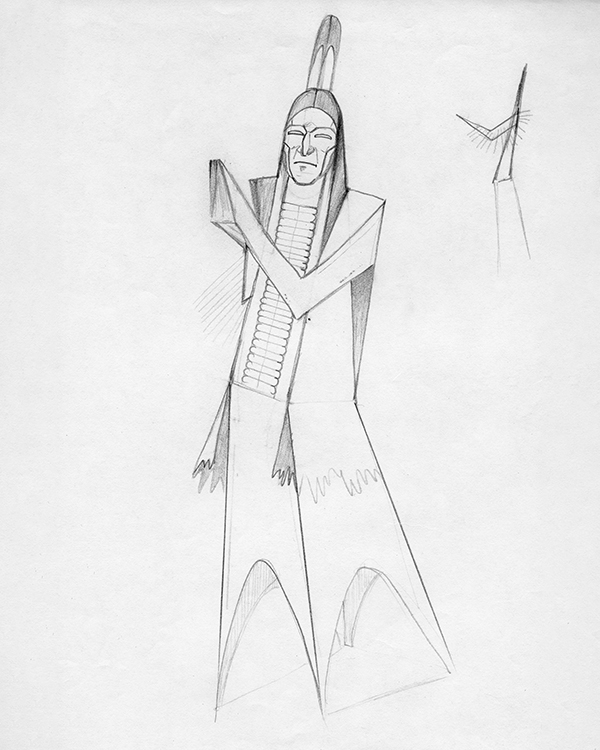
Preliminary sketch for Keeper of the Plains
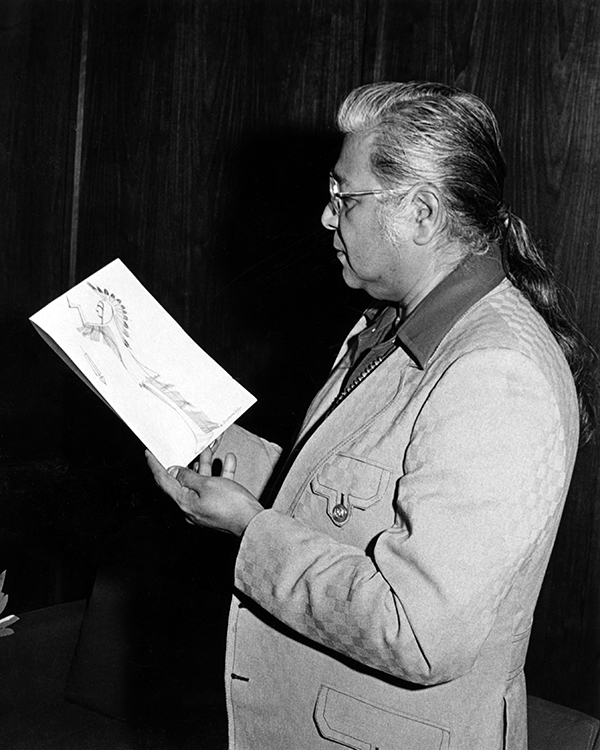
Bosin holding his finalized sketch for Keeper of the Plains
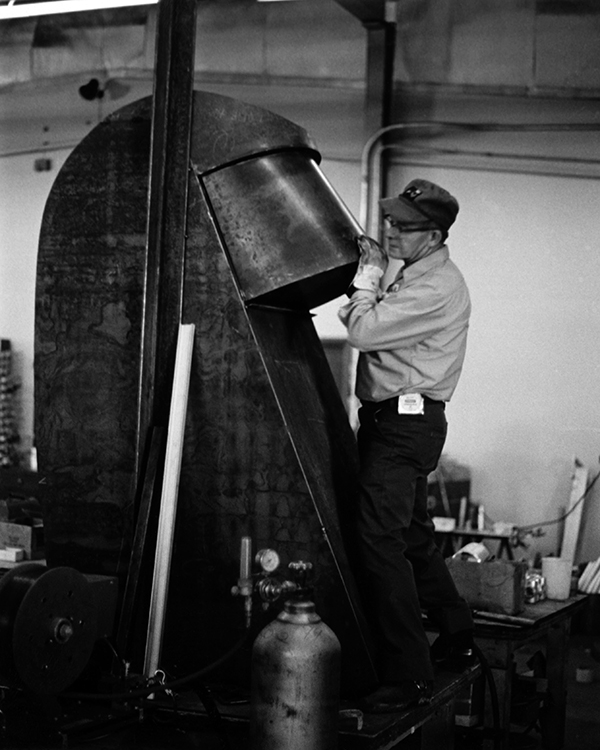
Doug Lawson assembling the Keeper
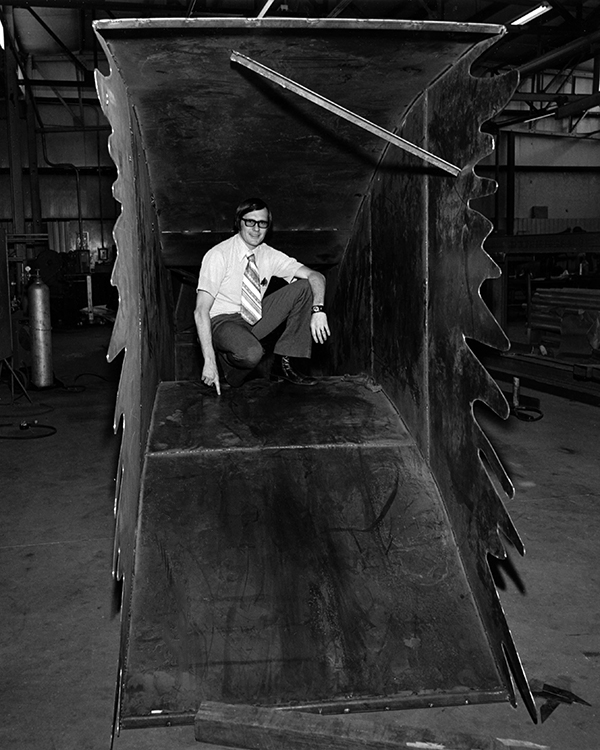
KG&E draftsman Gary Snider inside the Keeper
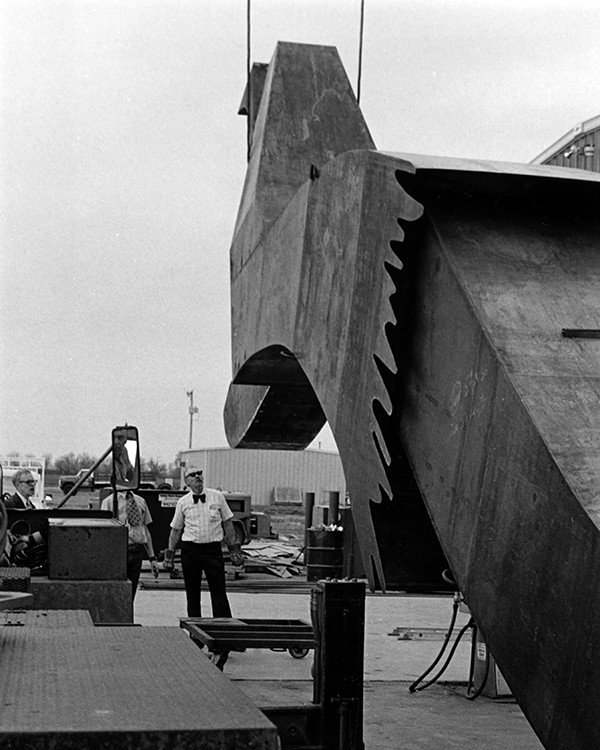
Martin Callstrom (left) with unidentifed men looking at the unfinished Keeper
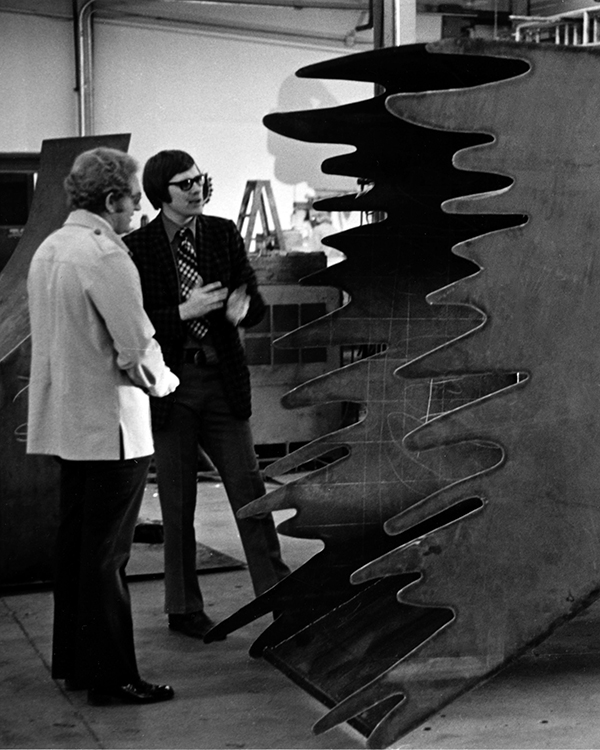
Tom Washburn with Gary Snider examining the Keeper
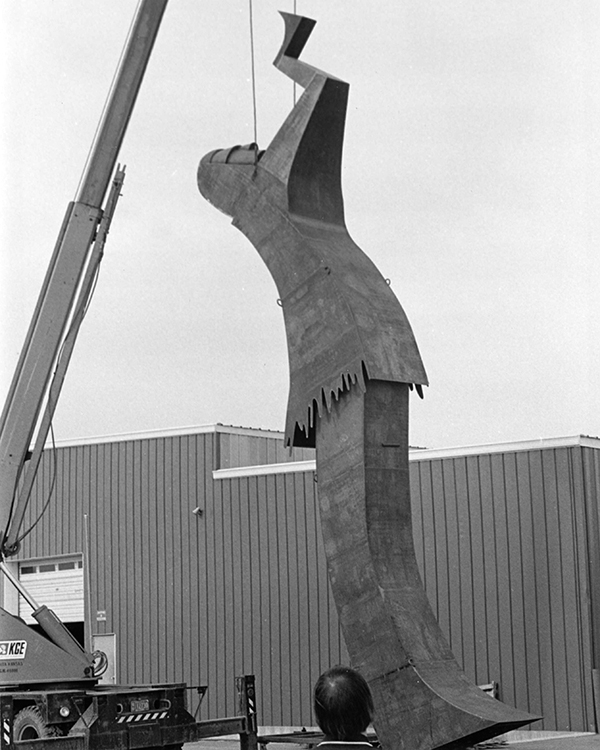
Lifting the unfinished Keeper
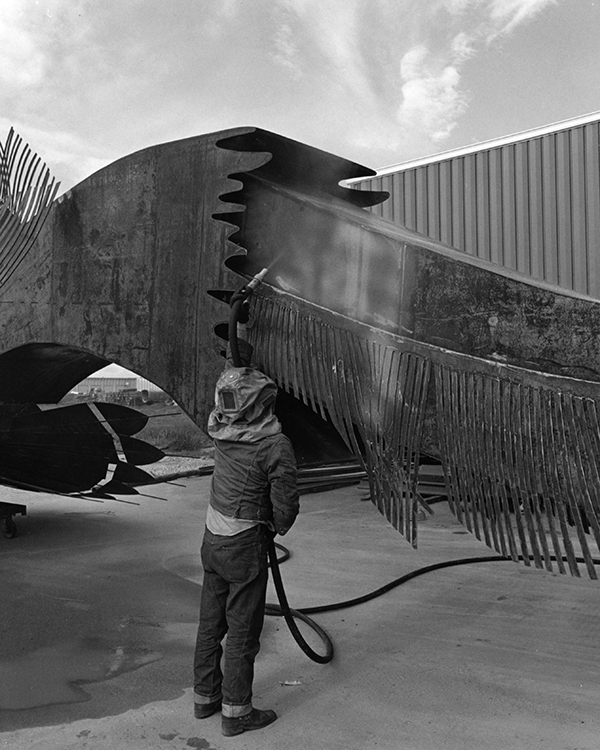
Unidenfied man assembling the Keeper
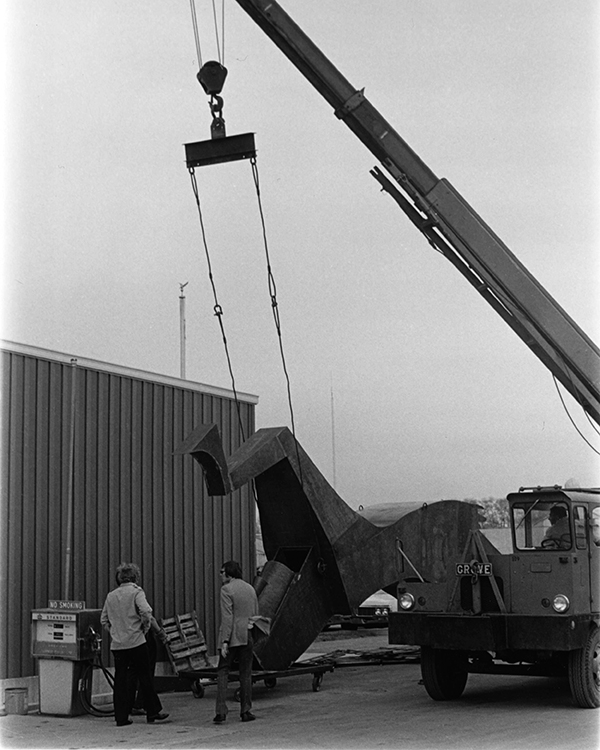
Tom Washburn and Gary Snider looking at the unfinished Keeper
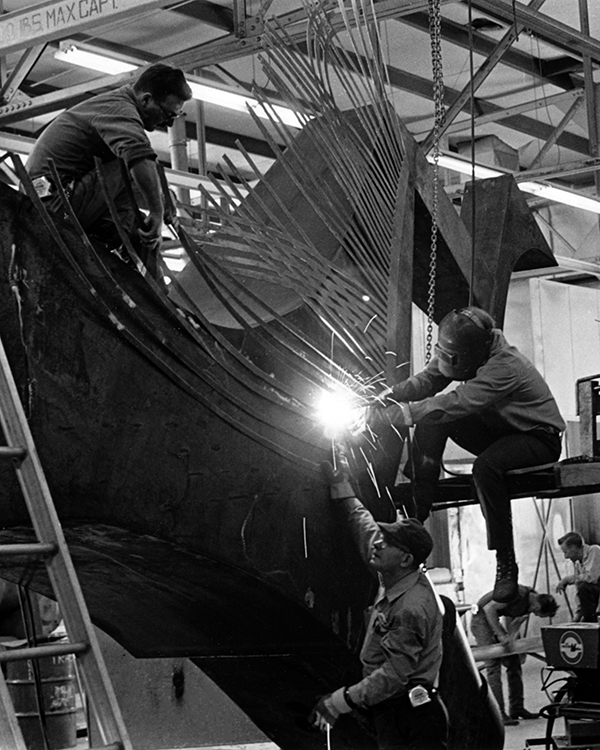
Ronald Kanavy,Doug Lawson and unidentifed man assembling the Keeper
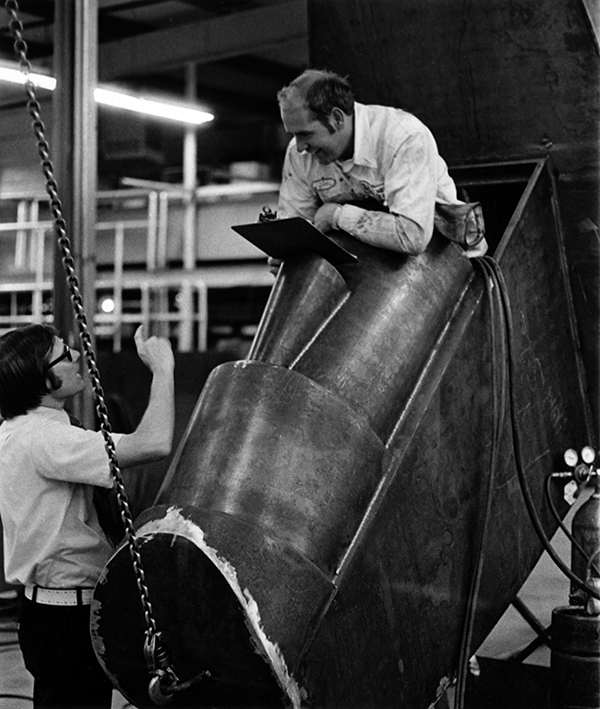
Gary Snider and Jerry Zellner inside the Keeper
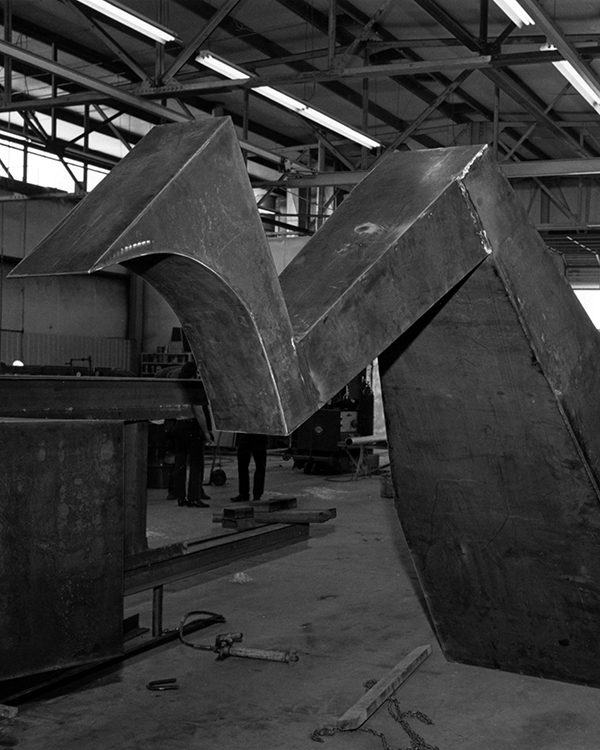
The unfinished Keeper (hands showing)
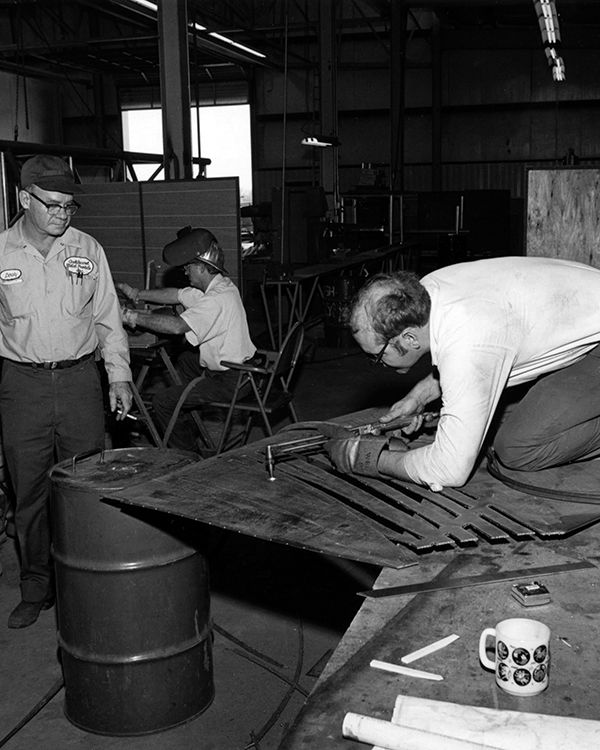
Doug Lawson and unidentified man assembling the Keeper
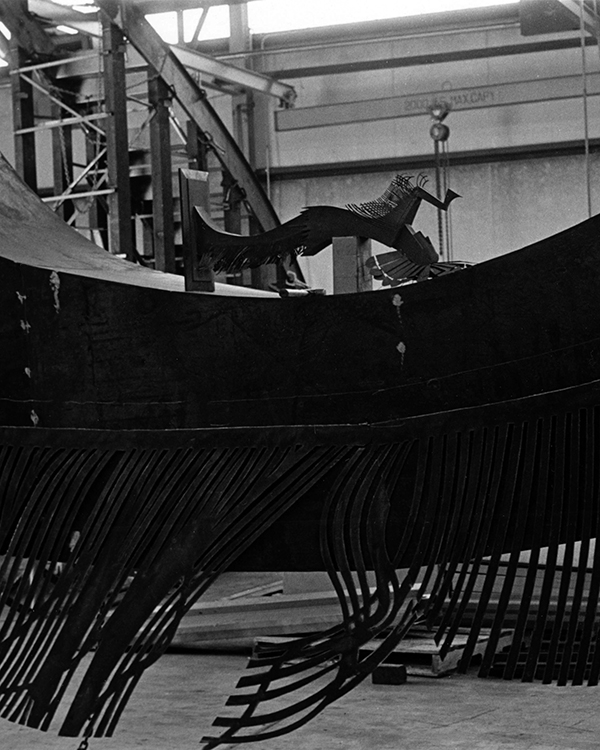
Small model of the Keeper on top of the Keeper.
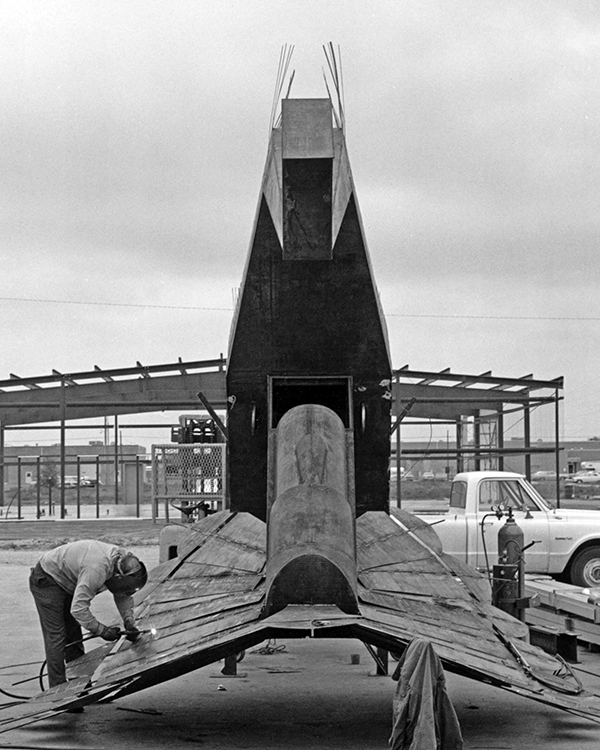
Unidentified man assembling the feathers on the Keeper
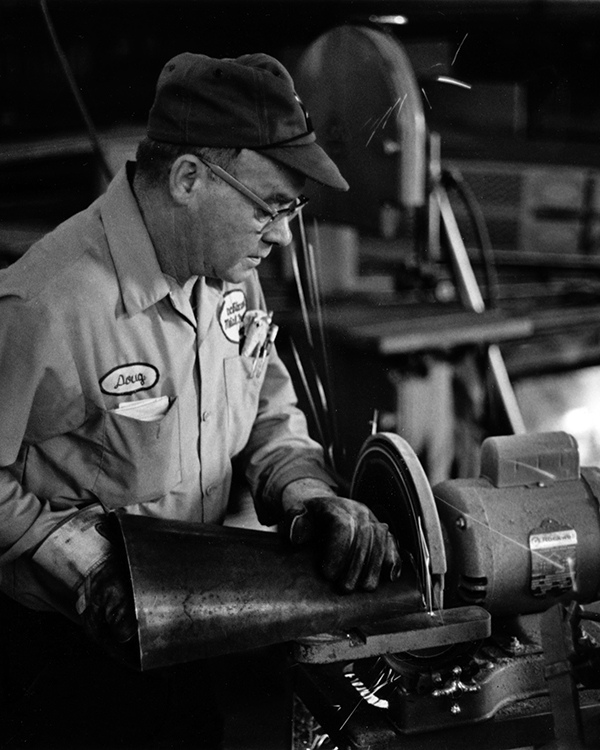
Doug Lawson working on a piece of the Keeper
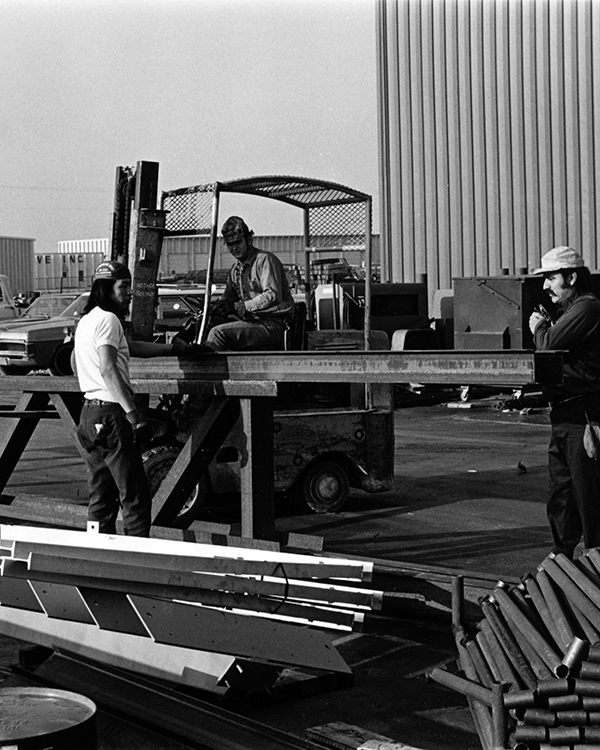
Unidentified man, Jerry Dika, Al Aramburu
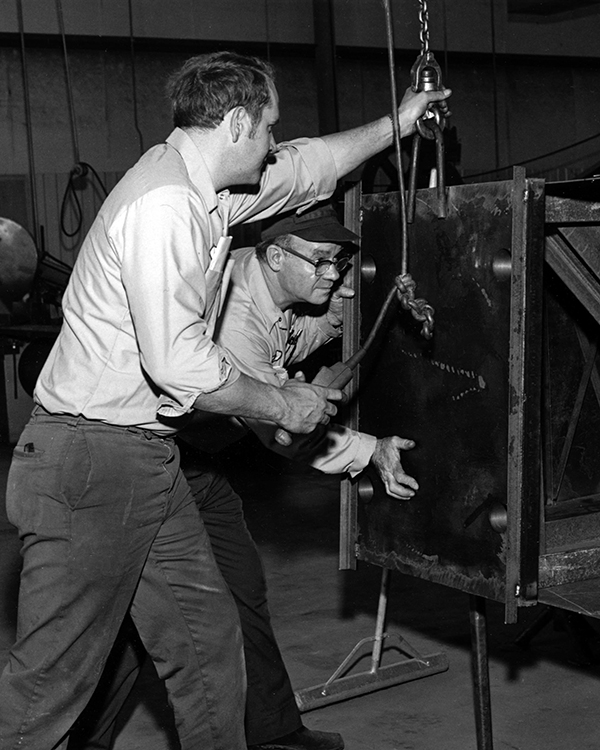
Jerry Zellner and Doug Lawson assembling the Keeper
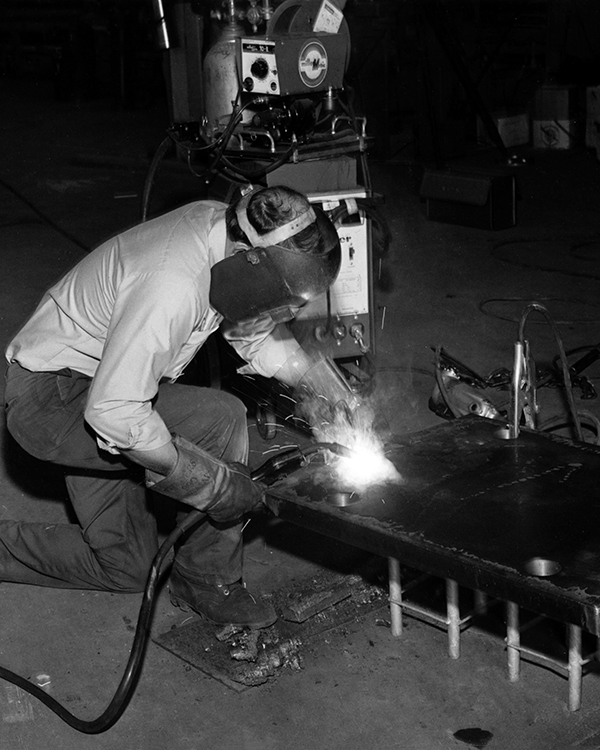
Unidentifed man assembling the Keeper
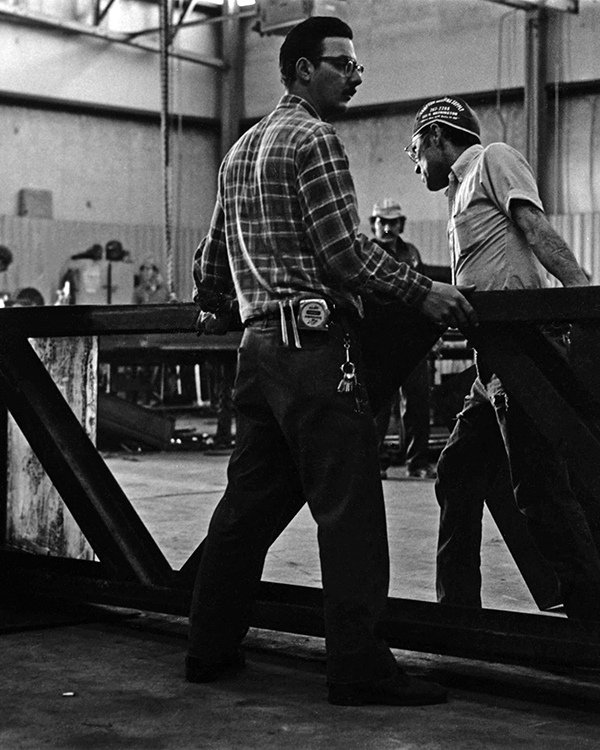
Ronald Kanavy and Roy Hatfield
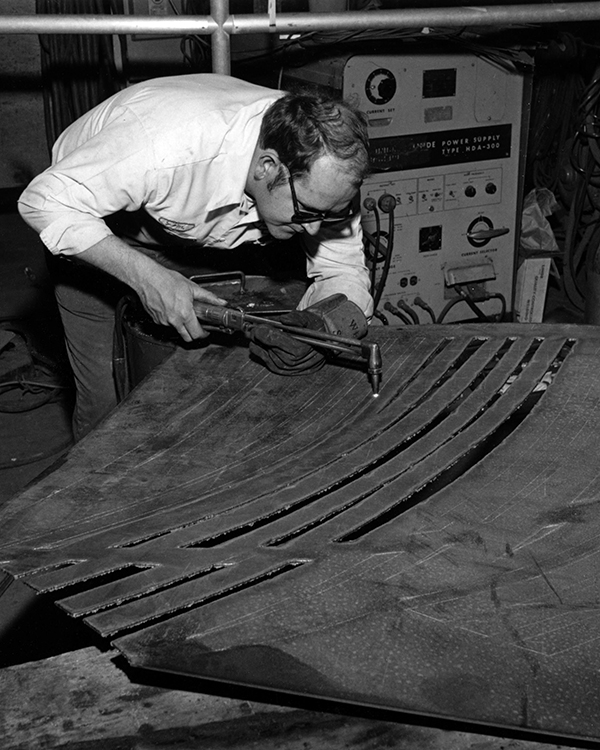
Jerry Zellner assembling the Keeper
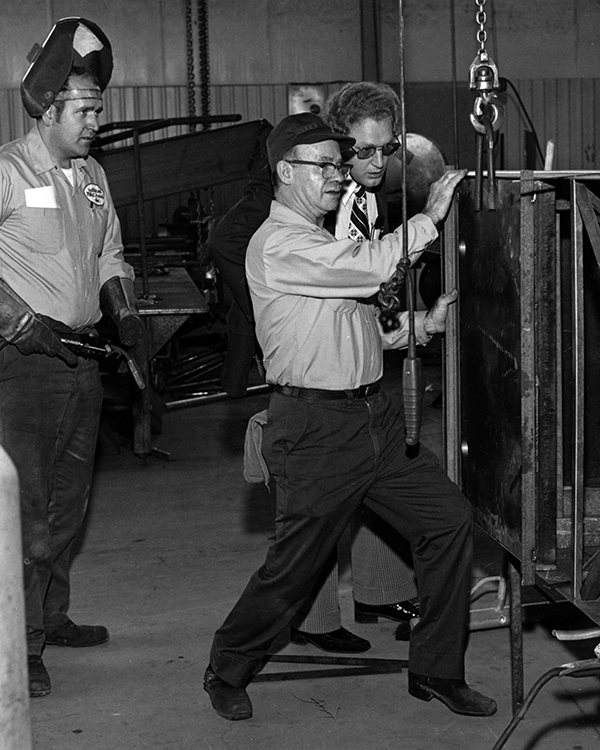
Jerry Zellner, Doug Lawson, Tom Washburn
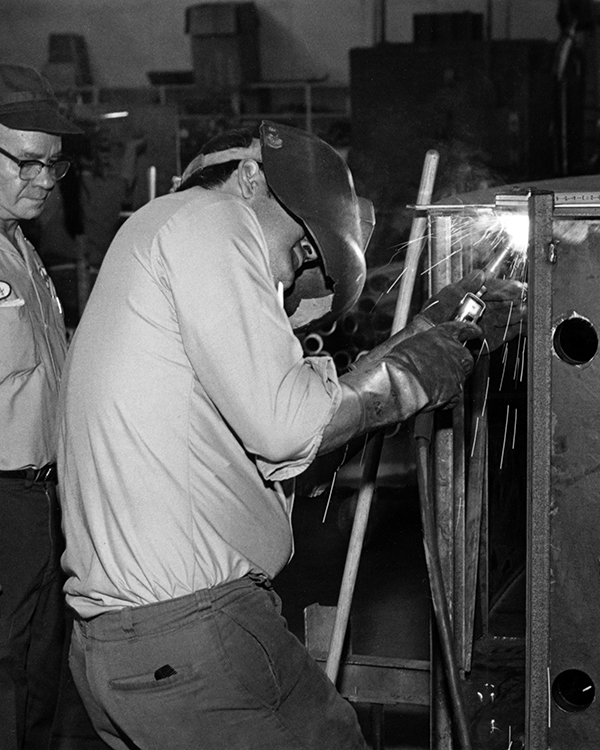
Doug Lawson and Jerry Zellner assembling the Keeper
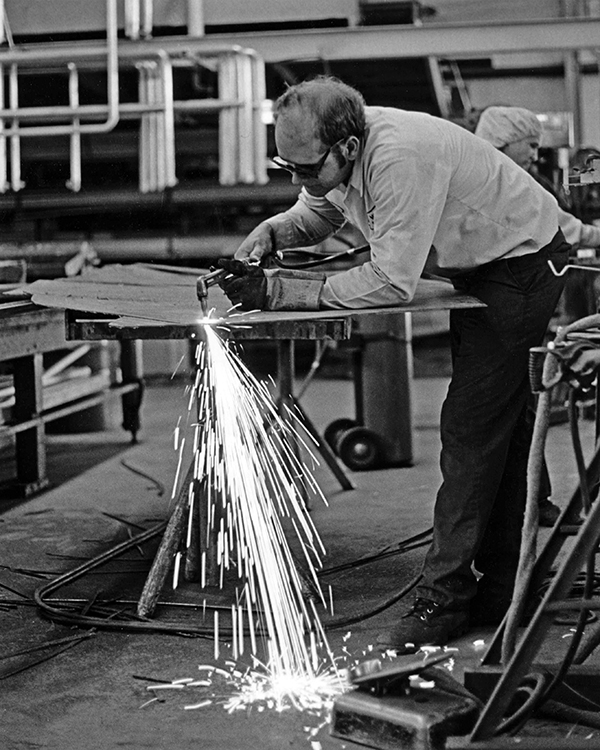
Jerry Zellner assembling the Keeper
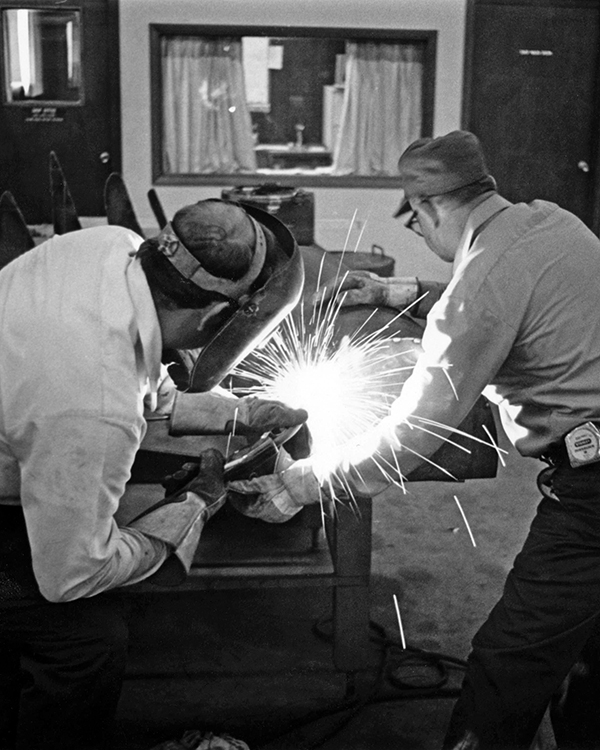
Jerry Zellner and Doug Lawson assembling the Keeper
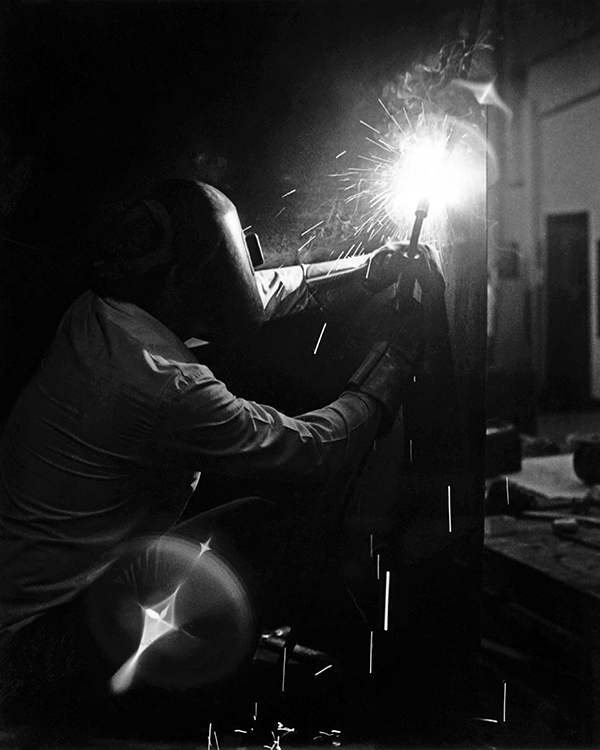
Unidentified man assembling the Keeper
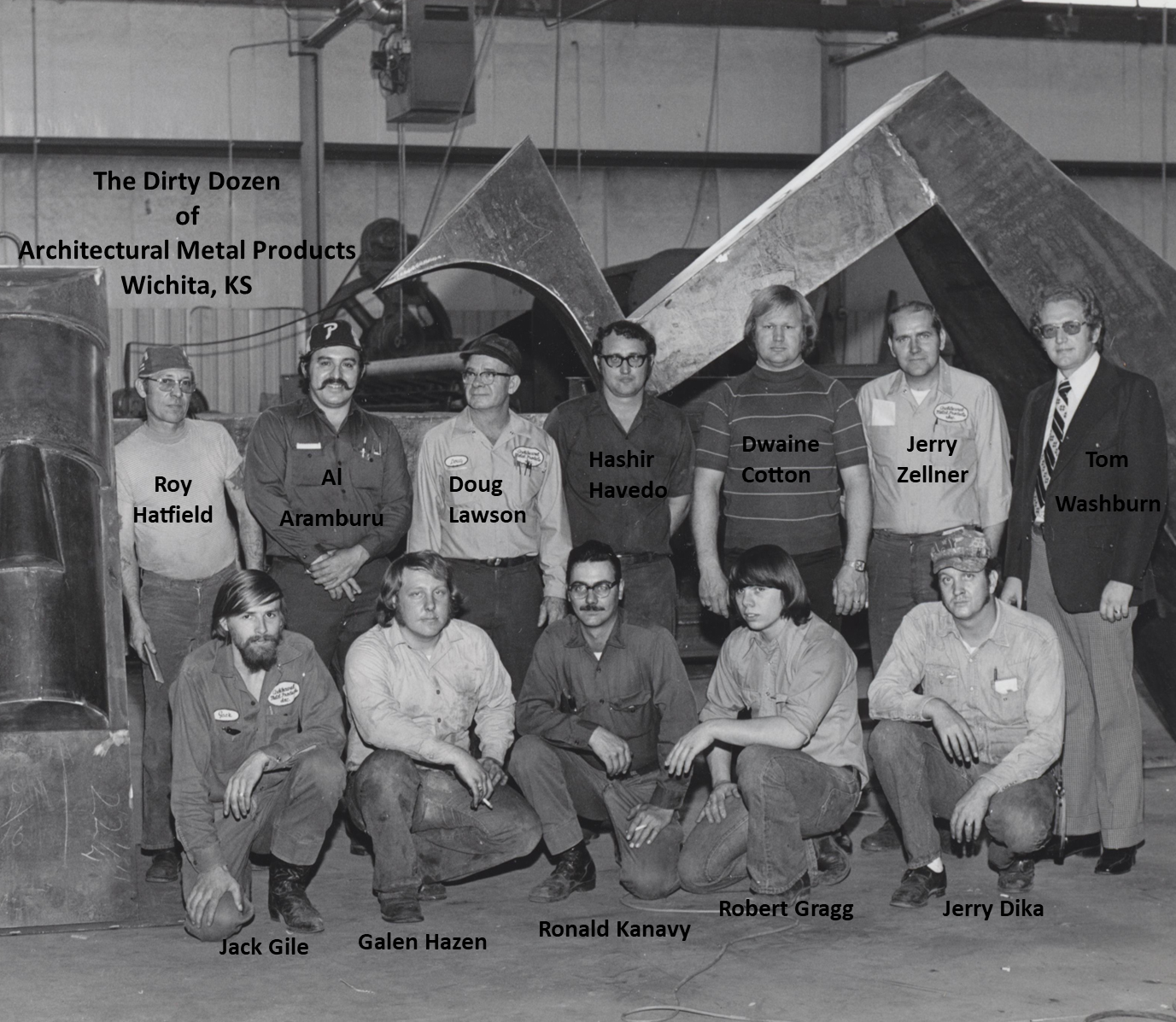
The Dirty Dozen of Architectural Metal Products
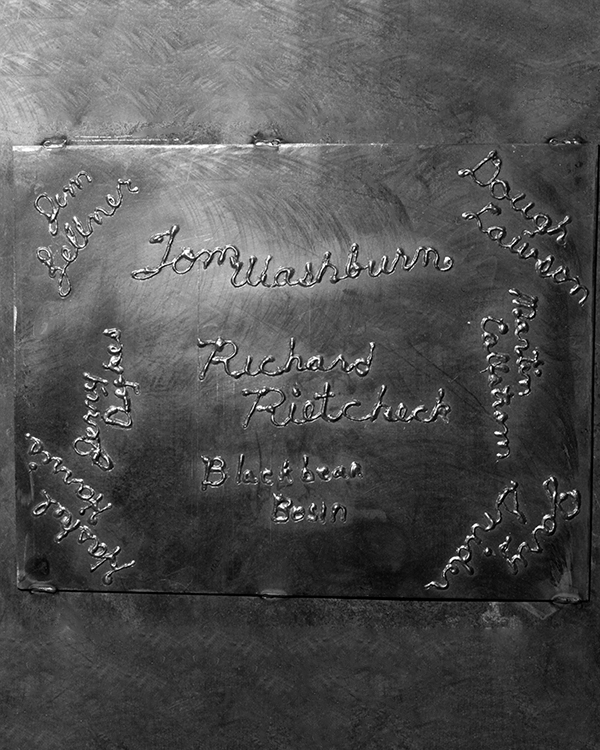
Names of people welded on the plate
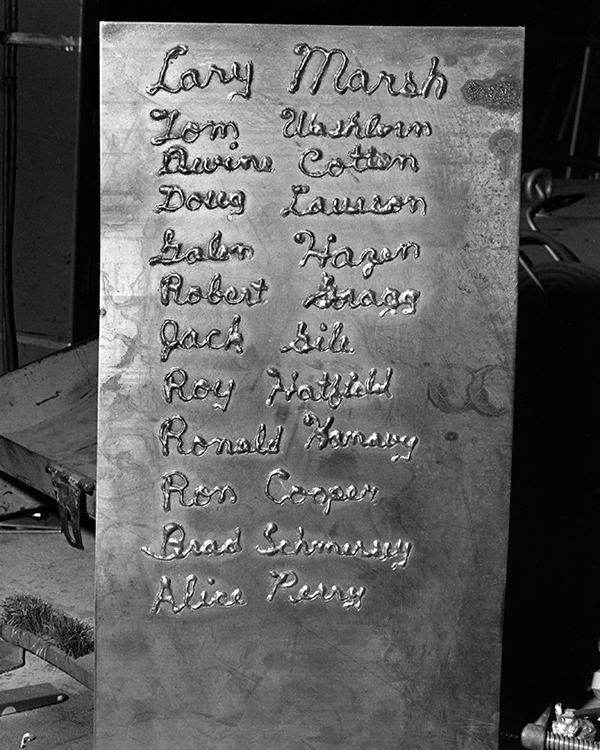
Names of people welded on the plate
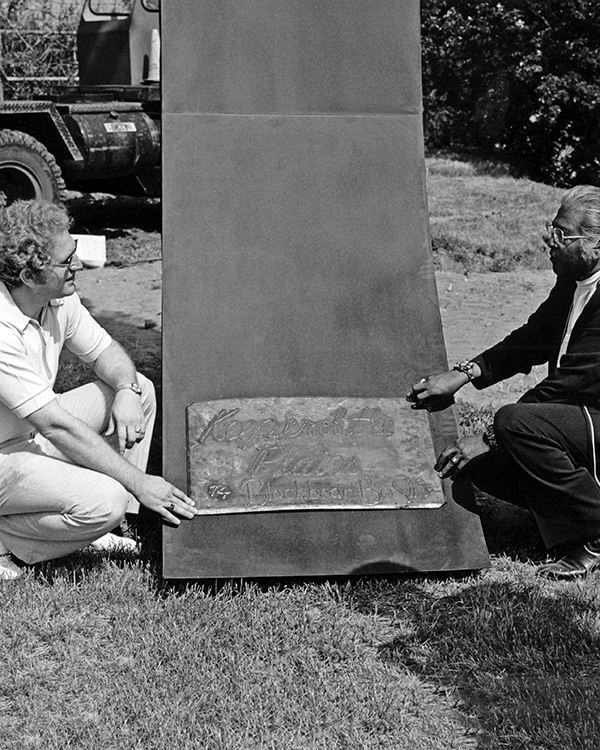
Tom Washburn and Blackbear Bosin
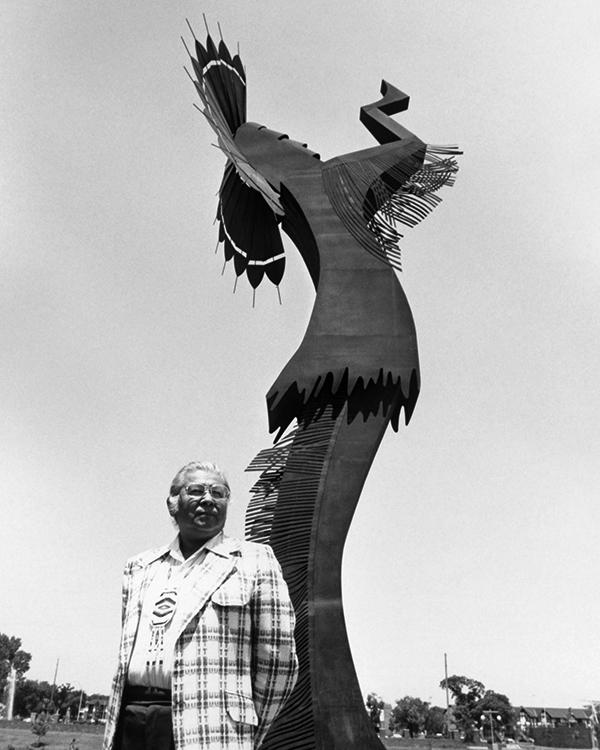
Blackbear Bosin standing before the Keeper of the Plains
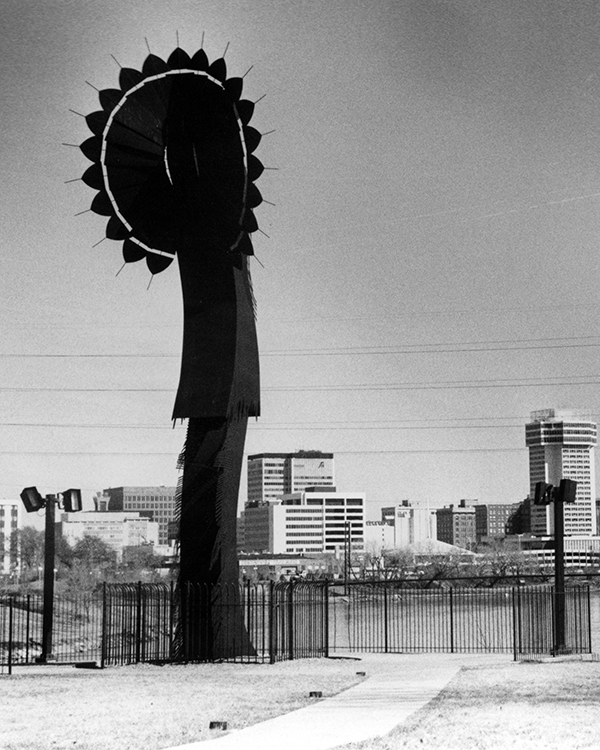
Keeper of the Plains at the original location
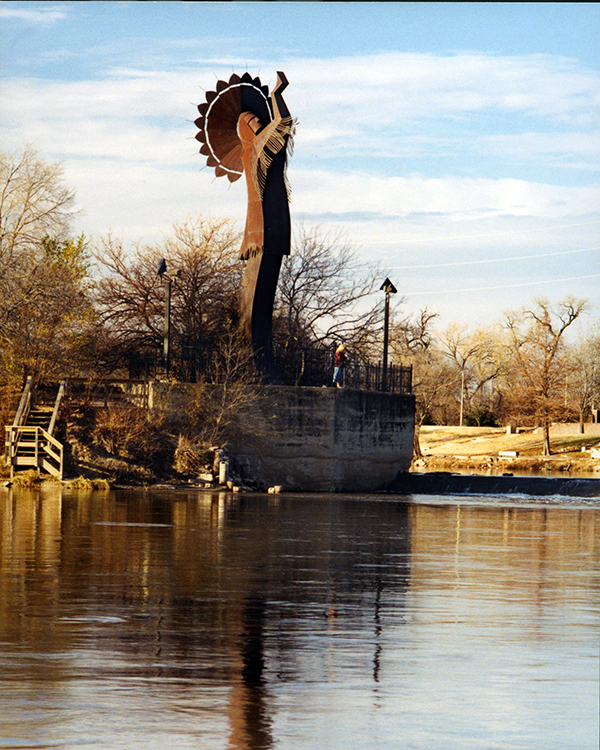
Keeper of the Plains at the original location
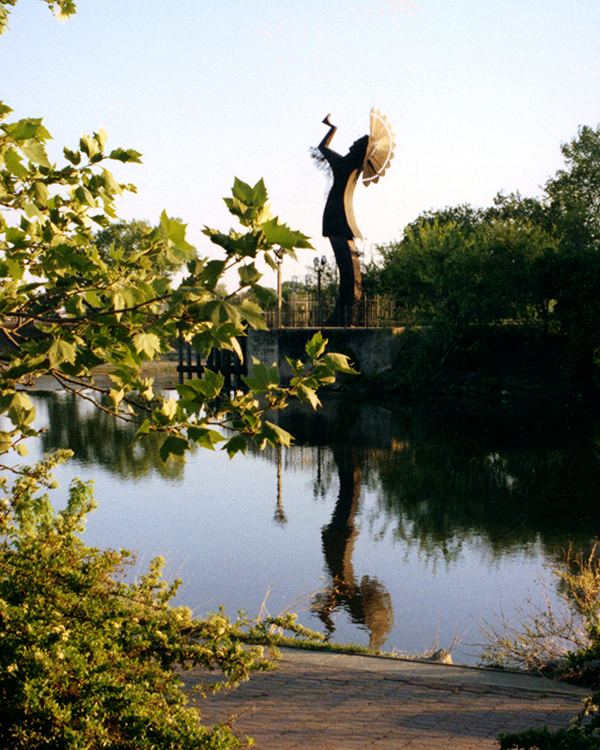
Keeper of the Plains at the original location
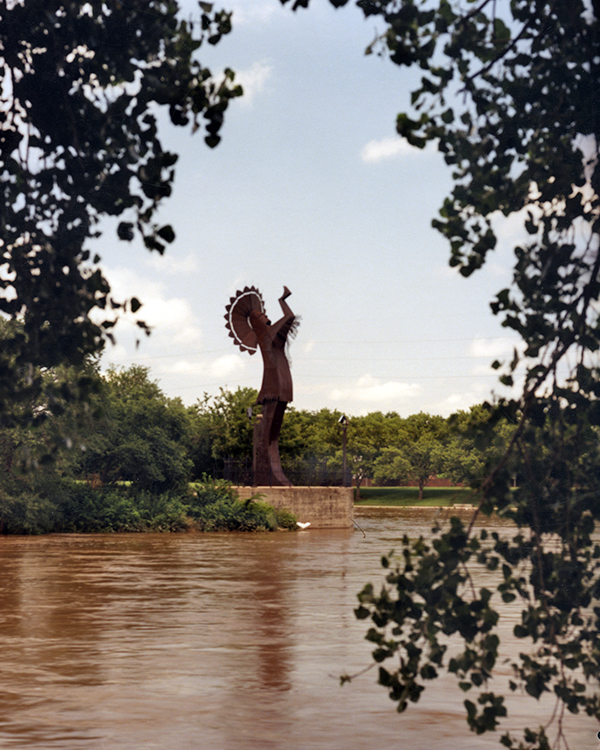
Keeper of the Plains at the original location
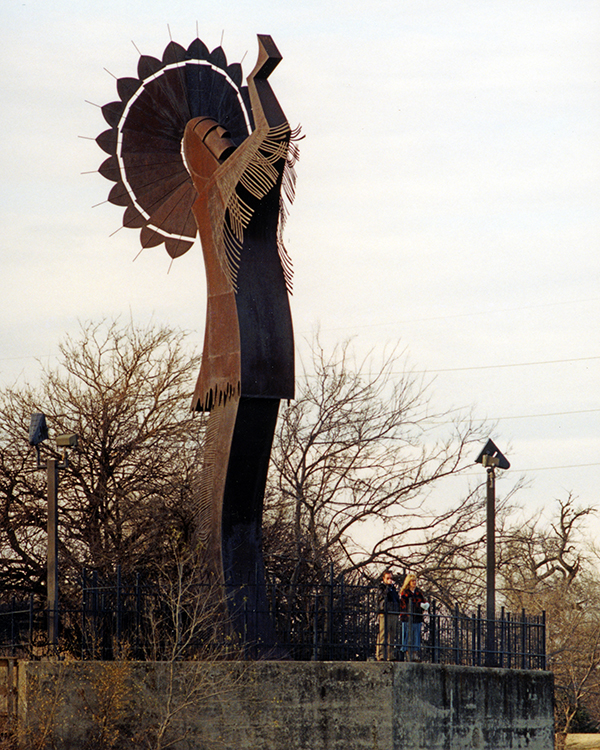
Keeper of the Plains at the original location
In 2006, as part of a beautification project, the City of Wichita elevated the Keeper onto a 30’ rock and built the bridges and plaza area. The Keeper, which faces east to greet the rising sun, stands upon a large rock, into which a wooden door with a turtle on its face, was cut into it. The Keeper, which began as a humble idea in the mind of a local artist, is beloved by Wichitans and is THE iconic symbol of Wichita.

